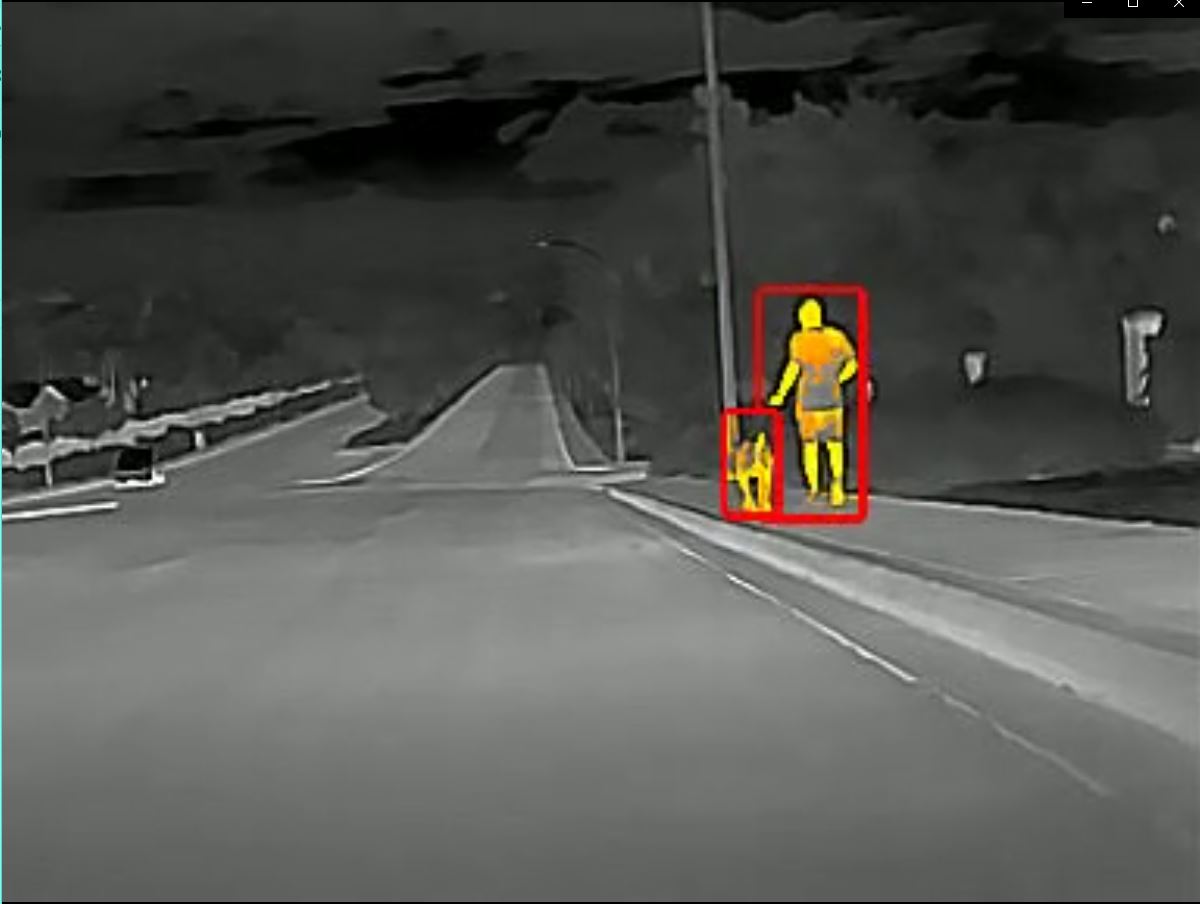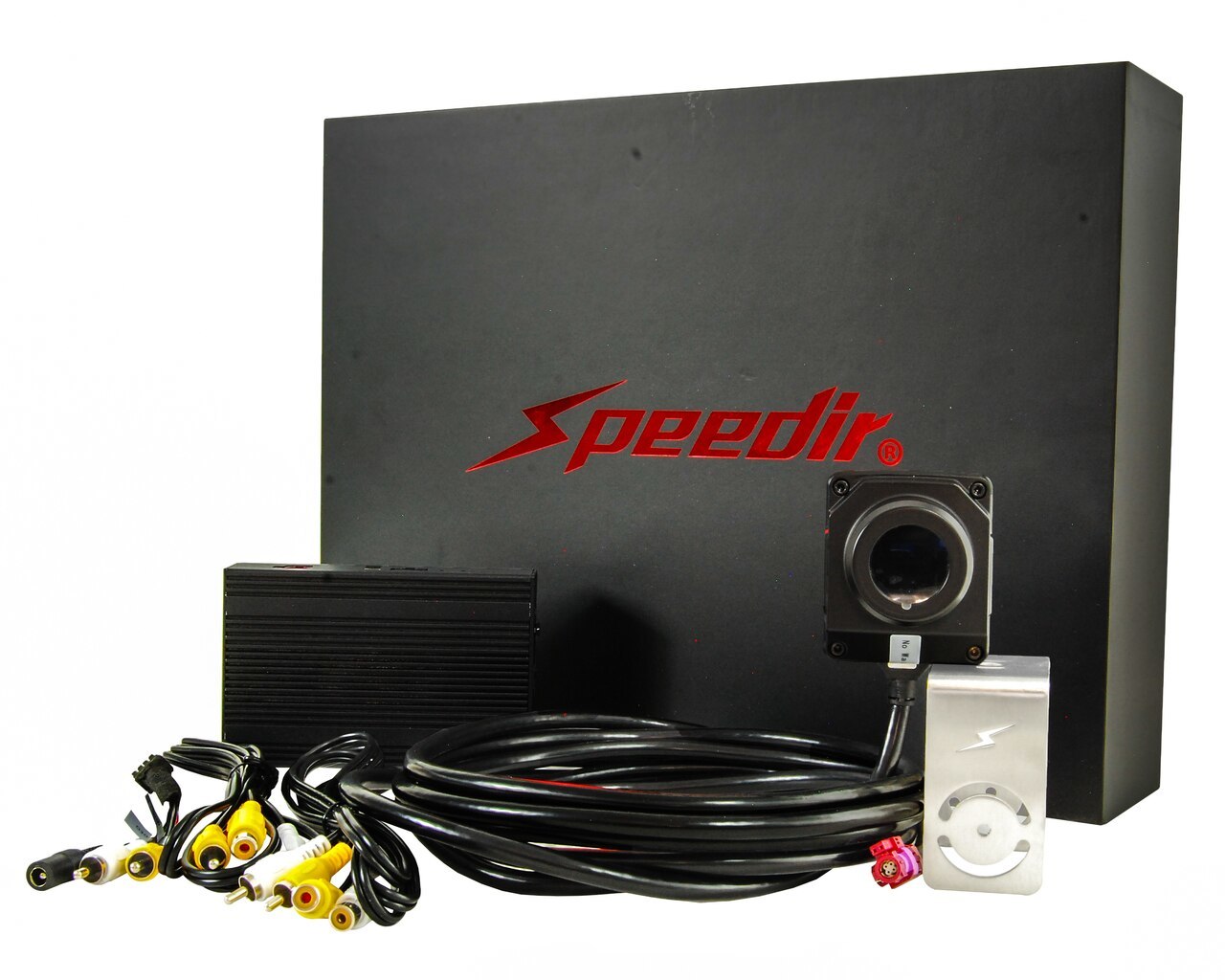Pros & Cons: Night Vision Driving Cameras
Posted by Speedir Thermal Vision on 19th May 2020
Updated March 2023
While a night vision driving camera is one of the most useful tools you can have in your vehicle, especially when driving at night, it does come with its pros and cons. There are some risks when using night vision camera systems on the road, and this article is here to help you weigh the benefits against the risks to decide if a thermal night vision camera is the right safe driving aid for you.
Pros of Using Night Vision Dash Cams
There are many pros to using powerful thermal night vision systems in your car. It can be unsafe to drive at night, but the aid of thermal night vision cameras offers unparalleled nighttime view to help you see at night.
According to the National Highway Traffic Safety Administration, 25% of travel occurs during nighttime hours, and 49% of passenger vehicle occupantfatalities occur during nighttime. This means the fatality rate per vehiclemile is triple at night what it is during the day. These worrying statistics is what makes active night vision cameras so useful when night driving.
Night vision driving cameras function exactly as they sound – they provide drastically improved nighttime vision to vehicle drivers during the dangerous, dark hours of the night. A dash cam with active night vision abilities alert drivers to road hazards that could cause a potentially fatal crash such as wildlife, pedestrians, and other cars on the road.
The early notice that drivers get from thermal night vision cameras of dangers in their way greatly improve reaction time and offer peace of mind when night driving. This opportunity to react sooner can allow a driver to avoid property damage and casualties, making night vision technologies one of the best ways to drive safer at night.
Some thermal night vision cameras also have smart AI capabilities to ensure a safer driving experience at night. These AI-enabled cameras will verbally warn the driver of an approaching hazard hundreds of feet away before the driver may realize it is even there due to the inadequacy of car headlights and the human eye’s limitations at night.
One of the key components of a quality thermal night vision camera is its night vision distance, which refers to how far away it can detect road hazards. Night vision driving cameras can detect thermal heat signatures thousands of feet beyond the reach of a car’s normal headlights, further improving the driver’s reaction time and allowing the driver to see what they normally would not be able to.
Another important benefit of using night vision dash cams is liability protection. In an accident, especially at night, it can be hard to discern exactly what occurred and whose fault it was. With a night vision system recording everything, it offers reliable protection in the case of an accident. You are much more likely to win an insurance claim with video footage of the incident, especially in a hit-and-run situation.
Where non-night vision cameras would not perform well, such as in low-light environments or extreme weather conditions like storms or fog, an automotive night vision system would excel. These advanced thermal night vision technologies allow for more protection and reliability during night driving than a traditional camera would, making them extremely popular amongst public transportation agencies, ridesharing services, law enforcement and fleet management of commercial truck drivers.
Night Vision Dash Cams Come with Risks
Although it may seem that night vision dash cams are the perfect solution to safer nighttime driving, there can be some risks that come with the use of these advanced cameras.
You may be concerned if dash cam footage can be used against you. The answer is yes; footage from a dash cam of any kind could be used against you in a liability case if it proves you are at fault. Because night vision driving cameras work so well in the dark, it will likely capture most evidence during a crash. However, some may argue that this is not necessarily a con to using these cameras because they will also capture evidence that can be used against the other driver.
It is important to note that if a thermal night vision camera is not placed properly, or slips during a bumpy ride, it may not capture what it was intended to capture. Obstructions in the view of the camera or its thermal sensors can cause it to not work properly. With the risk of getting into an accident during nighttime being so high, it is crucial to ensure you have placed your night vision driving camera properly and away from anything that could get in the way of its sensor or lens to ensure you get the most out of its improved nighttime vision benefits.
However, you must check to ensure your dash cam’s placement is in line with the laws in your state. Some states have rules that prevent you from installing a dash cam, or anything that could obscure your direct line of sight, on your windshield or dashboard at all. Some areas may limit the number of devices you can have attached to the windshield or dashboard, like GPS systems or dash cams.
A good rule of thumb is if your dash cam obstructs more than five square inches on the driver’s side of the windshield or sevensquare inches on the passenger side, you put yourself at risk of not only crashing but also being in trouble with the law. According to eyewitnessdashcams.com two main caveats to having a dash cam setup in the United States are the Dash Cam Mounting Laws and the Privacy Laws. Please check your local laws by calling your city’s law enforcement agencies or doing online research for your area’s codes.
It is also crucial that you do your research on the type of dash cam you are buying. The way your camera stores footage is an important feature to know about. Some cameras automatically save their footage to an iCloud file or other online storage device because they have built-in Wi-fi. Other cameras constantly record over old footage on their memory cards, so they do not run out of room in their storage. Others still simply require an exchange of memory cards to continue recording when one becomes full. No matter what memory storage your camera uses, you must stay on top of making sure there is room for new footage, otherwise your old footage may be recorded over, or new footage may not be recorded.
You must also ensure you have a reliable, safe power source for your thermal night vision camera. Some night vision driving cameras may run on independent batteries, so it will be important to keep a supply of fully charged batteries in your car to exchange for the old ones to make sure your camera is always able to record. Some people choose to hotwire their dash cam into their car, which could drain your car battery. Other dash cams can plug into a car’s cigarette lighter to draw their power. No matter how you charge your night vision camera system, make sure it is safe and reliable.
Conclusion
Although powerful thermal night vision systems could completely change your night driving experience, they could potentially have drawbacks that might make you hesitate to buy one. However, the pros certainly outweigh the cons, and the assistance and safety a thermal night vision camera provides will give you a peace of mind you cannot get any other way.
The Best Dash Cam Overall
The Night Owl and Night Owl Plus thermal night vision cameras by Speedir are two of the best night vision safe driving assistants on the market today. The night vision technologies behind these two cameras from Speedir have been worked on and perfected for more than 18 years, with night view systems incorporated that rival other top cameras.
The Night Owl thermal camera outputs clear, high-res images based on heat signatures picked up by its state-of-the-art thermal sensors from up to 3000 feet past the headlights of the car. It is able to be connected to any screen to offer customizable options for video output at 720x480p resolution. Being a thermal camera, its sensors work well in any low-light or low-visibility situation including cloudy nights, heavy rain, fog, snow, or smoke.
The Night Owl Plus thermal camera comes with Artificial Intelligence to create the ultimate in smart night vision assistant cameras for everyday consumers. Thanks to this advanced driver assistance system built-in to the Night Owl Plus camera, you will be alerted of potential road hazards up to 400 feet away. With all the customizable benefits of the regular Night Owl camera, the Night Owl Plus offers the best combination of smart technology and thermal night vision technologies for an unparalleled nighttime view.
Speedir’s cameras are the best solution to encouraging safer driving for commercial truck fleets, rental car agencies, ridesharing companies, emergency service vehicles or law enforcement agencies and offer the opportunity for reliable liability protection. Contact Speedir to learn more about the great deals they offer to fleet managers.
To learn more about the nighttime driving experience Speedir’s thermal cameras offer, contact them at info@speedir.com.



